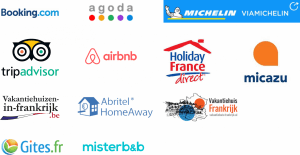Camargue
White horses, black bulls and pink flamingos
The Camargue is a national park located south of Arles, in the Rhône delta. At 140,000 hectares, it is western Europe’s largest river delta.
This area of outstanding natural beauty known for its red salt flats, marshlands, semi-wild white horses, beaches, black bulls, pink flamingos, bird watching and rice paddies. Salt has been harvested here since at least the Middle Ages.
The Camargue is home to black bulls, raised for bullfights in France and Spain. They are herded by French cowboys (gardians). Bullfighting is banned in 90{dad2043e29fe7a95205858f4aee3eccfeae41a5ccda41d2c2c245dff5abd53c0} of France, but 5 departments have a legal exemption. Bullfighting festivals (ferias) are held in Arles, Nîmes and other towns in the region. The 5-day festival in Béziers, for example, attacts over a million visitors.
Over 1,000 bulls are killed in 800 fights (corridas) in France each year. But in the Camargue the challenge is often to pluck a ribbon from between their horns. Champion bulls live for many years.
Le Fort Pouzols-Minervois to the Camargue is a somewhat longer drive of around 2 hours (100 miles, 160 km) along the A9 motorway. Visitors can tour the area itself by car, on horseback, by boat, hovercraft, on foot, by horsedrawn carriage, bicycle and even by helicopter.
There are many themed routes to explore the Camargue. www.arlestourisme.com has 14 itineraries to inspire you. Remember to bring your mosquito spray though, especially during hot summers.
The Camargue is a bit further away from Le Fort Pouzols-Minervois, but you could decide to drive along the lagoons instead of taking the motorway home.
Le Grau-du-Roi and the fishing villages along the Étang de Thau specialise in excellent seafood straight from the lagoon. Why not go for oysters, mussels or amazingly fresh fish on the coast in Sète or Mèze? Meat, vegan and vegetarian options are available too in most restaurants.
